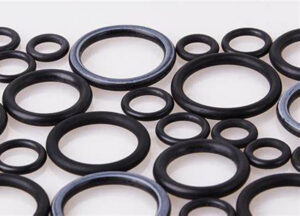FKM and FFKM crosslinking methods and their effect on upper use temperature of seals
by Ronald R. Campbell and Thomas S. Reger, Greene, Tweed & Company LLC.
Fluoroelastomers (FKMs) were first introduced to market more than 50 years ago in response to performance needs in the aerospace industry. Their increased thermal stability and chemical resistance, and comparable mechanical properties relative to hydrocarbon rubber materials provided significant performance benefits. Not surprisingly, FKM compounds soon became widely adopted in seals and gaskets for many other applications across the automotive, oil and gas, semiconductor and pharmaceutical/ food processing industries, where long term durability and reliability in challenging environments was critical.
Perfluoroelastomers (FFKMs) offered the next evolution in high temperature materials. The discovery of polytetrafluoroethylene (PTFE), a heat resistant and chemically inert fluoroplastic, followed by perfluoroalkoxy (PFA) copolymers having improved melt processability, led to the availability of perfluorinated tubing, piping, fittings and films for specialized applications. The incorporation of a cure site monomer into the polymer backbone allowed for crosslinking and elastomeric properties.

